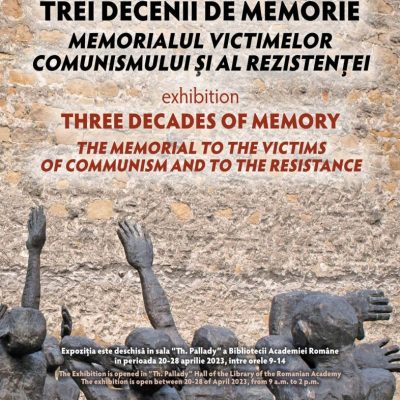In Romania’s far north, close to the Ukrainian border, the town of Sighetu Marmatiei is home to the world’s first museum dedicated to the victims of communism, built 18 years ago. Symbolically, the museum is housed in the old city prison, where in the 1950’s, communist authorities used to lock up foremost political figures of the previous regime, abusively toppled.
In May 1950, over 100 officials from across the country – former ministers, academicians, economists, service men, historians, journalists and politicians – were brought there. Some of them received heavy sentences, others didn’t even have trials. Most of them were over 60 years of age.
Later, in October and November 1950, Roman Catholic and Orthodox Catholic priests were locked up at Sighet. The penitentiary was referred to as a “special labor unit”, also known as the “Danube colony”. Actually, it was a slaughterhouse for the country’s elite, and at the same time, a facility no one could escape from, as the Soviet border was less than 2 kilometers away.
In 1955, some political detainees were pardoned, and the facility became a common prison. It was shut down in 1977, and the building became a broom factory, a warehouse for storing salt, and eventually, an abandoned ruin. It was in this state the writers Ana Blandiana and Romulus Rusan found the facility and established the “Memorial to the victims of communism and the resistance” through the Civic Academy Foundation in 1993. Poet Ana Blandiana recalled the opening event, which took place 18 years ago.
Ana Blandiana: “It was a time when Romania wasn’t even a member of the Counci of Europel, and the idea of a Memorial to the Victims of Communism still sounded pretty odd to Europe. Even so, the Councilof Europe took our project under their wing, but things moved slowly, as there was a shortage of funds. 4 years later, we opened the summer school, which is now 14 years old, and shares the museum’s ideas. The Memorial comprises the Museum in Sighet and the International Center for Studies on Communism, which is based in Bucharest, and is the backbone of the museum. This is one of Europe’s biggest museums, both in cultural terms and in terms of size, as it comprises 60 halls.”
Ana Blandiana told us what the visitors of this 18 year-old museum could see:
Ana Blandiana: “There are halls featuring the destruction of the Romanian Academy, the collectivization of agriculture, the destruction of the peasant class. Also, at the museum you can find out how the Securitate was set up and how it worked. The cells were reconstructed in which politicians Iuliu Maniu and Gh. Bratianu died. In fact, there are other rooms dedicated to them, where their political and intellectual achievements are presented. The Sighet Memorial is not simply a Sighet memorial, and not even simply a memorial dedicated to communist repression. It has halls featuring the resistance in the other East European countries. We started five or six years ago to lay out halls one by one like the one dedicated to the Solidarity free union in Poland. In fact, the room was donated by the Polish Institute in Bucharest. There is also a hall dedicated to the Hungarian revolution of 1956, one dedicated to the Berlin Wall, another dedicated to the Prague Spring and the 77 Charter. We also have a hall presenting the chronology of the Cold War, the world framework of communism, all that happened in the 50 years of communism. Dissidents are also mentioned”.
On 18 October, the European public was able to admire part of the patrimony of the Sighet memorial as part of an exhibition staged at the European Parliament in Brussels. The ‘Civic Academy’ Foundation in partnership with EuroMP Monica Macovei mounted that exhibition called ‘Memory as a Form of Justice’. The same exhibition will soon be opened e in Bucharest, hosted by the European Commission Representative Office in Bucharest.


